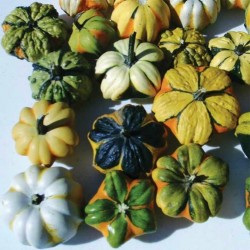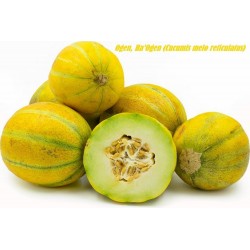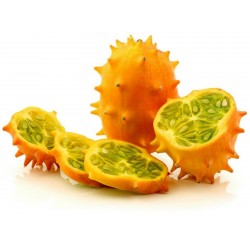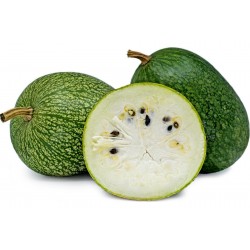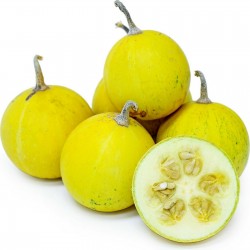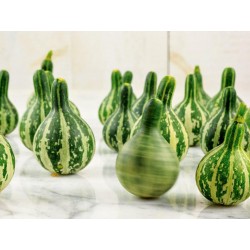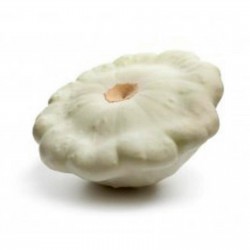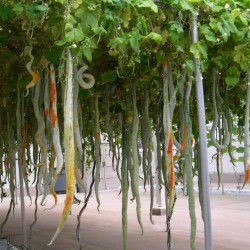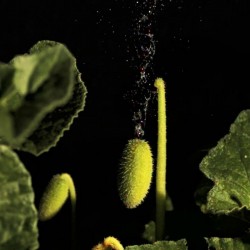
Squirting Cucumber Or...
Fiyat
€1,80
SKU: PK 7
Seeds Gallery Com,
5/
5
<h2><strong>Squirting Cucumber Or Exploding Cucumber Seeds (Ecballium elaterium)</strong></h2>
<h2><span style="color:#ff0000;"><strong>Price for Package of 5 or 10 seeds.</strong></span></h2>
<p>Squirting cucumber (Ecballium elaterium), trailing herbaceous plant in the gourd family (Cucurbitaceae). The plant is native to the Mediterranean region but has been introduced to other areas as a garden curiosity for its distinctive explosive fruits. Squirting cucumber contains poisonous cucurbitacins, and all parts of the plant can be fatal if ingested.</p>
<p>The hairy, rough, thick-stemmed plant may spread out to about 60 cm (about 24 inches) and has yellow bell-shaped flowers. The long-stalked bluish green fruits are about 4–5 cm (1.6–2 inches) long. Upon reaching maturity, the fruits explosively eject their brown seeds as they detach from the stem; the seeds may travel 3 to 6 metres (about 10 to 20 feet) from the plant.</p>
<p>Before we delve into the plant’s historical usage, let’s be clear that squirting cucumber contains high levels of cucurbitacins, which can be fatal if ingested. That said, the bitter cucurbitacin was cultivated in England and Malta into the nineteenth century to control worms. It has been used as a medicinal plant for over 2,000 years with explosive effects upon the human body worthy of its name. Apparently, the more benign effects treat rheumatism, paralysis, and cardiac disease. The root is said to be an analgesic and topically squirting cucumber was used to treat shingles, sinusitis, and painful joints. However, the more volatile effects are purgative and abortive. Large doses have caused gastro enteritis and death. At any rate, modern herbalists do not utilize squirting cucumber at this juncture nor should you.</p>
<p><strong>Disclaimer: The contents of this article is for educational and gardening purposes only. Before using ANY herb or plant for medicinal purposes, please consult a physician or a medical herbalist for advice.</strong></p>
<p><strong></strong></p><video width="640" height="320" controls=""><strong></strong><source src="http://i.imgur.com/3TZEsSu.mp4" type="video/mp4"><strong></strong></source><strong></strong></video><strong></strong>
<h3><span style="color:#ff0000;font-size:18pt;"><em><a href="http://i.imgur.com/3TZEsSu.mp4" target="_blank" rel="noreferrer noopener"><span style="color:#ff0000;">Squirting Cucumber video</span></a></em></span></h3>
<h2>WIKIPEDIA:</h2>
<p>Ecballium is a genus of flowering plants in the family Cucurbitaceae containing a single species, Ecballium elaterium, also called the squirting cucumber or exploding cucumber (but not to be confused with Cyclanthera explodens). It gets its unusual name from the fact that, when ripe, it squirts a stream of mucilaginous liquid containing its seeds, which can be seen with the naked eye. It is thus considered to have rapid plant movement.</p>
<p>It is native to Europe, northern Africa, and temperate areas of Asia. It is grown as an ornamental plant elsewhere, and in some places it has naturalized.</p>
<p>It is suspected to provide food for the caterpillars of the tortrix moth Phtheochroa rugosana.</p>
<p><strong>This plant, and especially its fruit, is poisonous, containing cucurbitacins. In the ancient world it was considered to be an abortifacient.</strong></p>
<p>Elaterium or elaterin is the name of the greenish substance extracted from the juice of the fruit that is used as a purgative.</p>
PK 7 (5 S)





